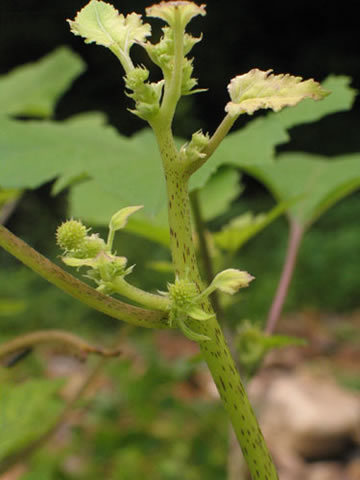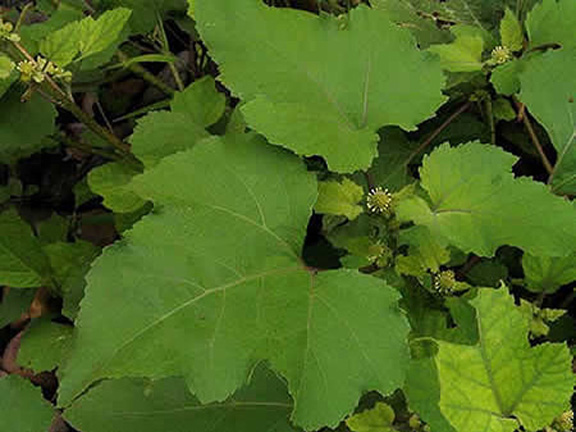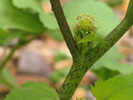
Problems: Cocklebur has been reported to be a weed in corn, cotton, rice, orchard crops, sugar beets, sugarcane, wheat, and pastures. The young seedlings are poisonous to cattle and pigs. The burs can lodge in wool reducing its quality and requiring special treatment for removal.
Found on a sandbar in the Jackson River
Species description: Common cocklebur is a coarse, erect, annual herb up to 20 dm tall. The stems are tough with short dark streaks or spots and covered with coarse hairs. The leaves are long petiolate, alternate, broadly ovate, margins toothed or shallowly lobed, surfaces rough-pubescent. The plant is monoecious: the male flowers are in inconspicuous heads clustered at the tips of branches; the female flowered heads are axillary, greenish in color with the 2 flowers in the head enclosed by the involucre. The fruit is a distinctive hard brown ovoid bur terminated by 2 beaks and covered with hooked spines.
Growth characteristics: Cocklebur is a cosmopolitan weed of wastelands and disturbed sites. It occurs in crop fields, pastures, roadsides, railway banks, streams, and flood plains. It is extremely plastic in habit growing tall and luxuriant on rich soils with high moisture, or to only a few inches in dry poor soils but still fruiting and setting seed.


